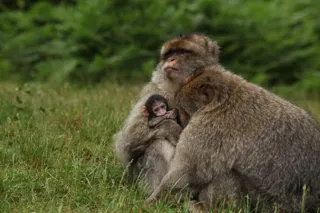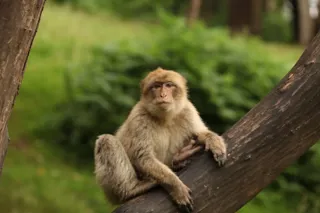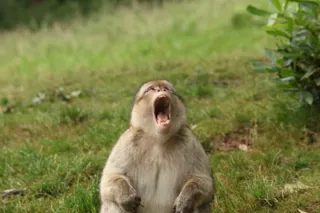Photography – Top Tips Photographing the Monkeys
6th Jul 2017
We recently teamed up with Graham Quinn Photography and ran a Photography Workshop here at Trentham Monkey Forest. As PR and Marketing Officer and the person responsible for taking pictures at Monkey Forest, I was able to attend the workshop too.
The workshop is brilliant for anyone who loves photography, at any level. Graham takes the time to answer individual questions and ensures everyone is comfortable with the settings on their camera before going over how he’d photograph the monkeys. You then put what you’ve learnt into action, before reviewing your images and heading out again in the afternoon.
As a Canon user myself, I’m still getting to grips with our new Nikon camera (it’s amazing!). From what I’ve learnt both from experience and from Graham’s brilliant workshop I’ve created a short list of top tips for photographing the monkeys:

1 – HIGH SHUTTER SPEEDS
Like most types of animals the monkeys here at Trentham move very quickly, climbing trees, jumping branches and foraging for food. This means a high shutter speed is essential to ensure you capture the action. This little baby was wriggling lots!
Image – 1/320, f.5, 200m

2 – WIDE APERTURES
To get the monkeys to stand out even more in your images, Graham recommends using a wide aperture (low f. stop). This creates depth of field and gives the background of the image a lovely blur effect, something that we love here at Monkey Forest!
Image – 1/200, f.3.5, 163m

3 – BE PATIENT
Patience is KEY! Any wildlife photography is a waiting game and even when you’ve set your camera up, waited and framed the perfect shot, the monkey is guaranteed to move and turn its back on you. Unfortunately, that is the nature of this type of photography, after all they’re wild animals!
However, I can guarantee that if you wait long enough you will get the shot you’re after – or something similar. Below is an image of one of my favourite monkeys, he has a brilliant character and gorgeous dark marks across his eyes. He was sat eating leaves, so nothing spectacular that would grant a brilliant picture. I waited a while and continued to take some average photos of him eating leaves and foraging for food. Eventually I managed to get these images which are very funny and will definitely be used.

4 – GET LOW
Something that Graham taught me in one of his first workshops at Monkey Forest is to get low and ensure you’re at a similar level to the monkeys. This does involve kneeling and getting stuck in a position when your legs decide to stop working, but it’s worth it. Instead of shots that look down on the action in front of the lens, you’re at the same level making the images look much better, and if a monkey does happen to look in the same direction as you, you get a much nicer shot.

5 – KNOW YOUR SUBJECT
All animals are different, so make sure you read our information boards and speak to our guides before photographing the monkeys. That way you can be more aware of the body language, gestures and behaviours you are seeing which helps when choosing what to photograph. We always tell photographers to be relaxed, and not to move quickly or direct your lens straight into the monkeys face as this may spook them.
We love seeing all your images from your time at Monkey Forest, so please do share your images with us on social media.
For more information on workshops held by Graham Quinn Photography visit his website.
Keep snapping away – good luck!

